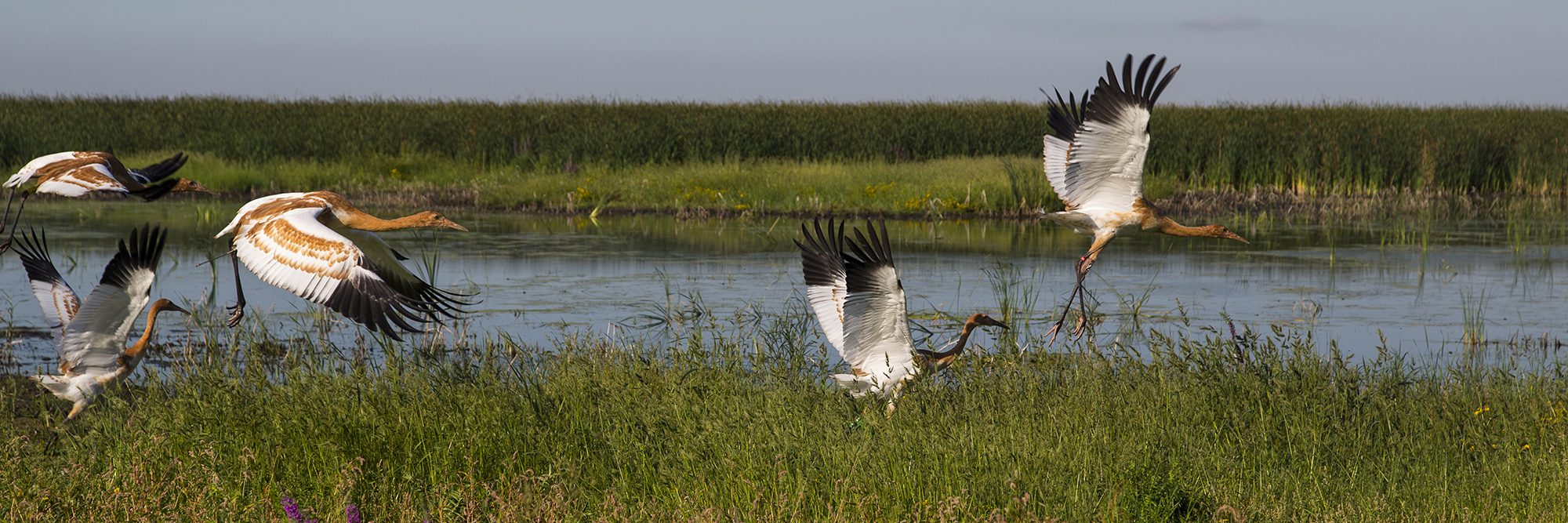
Into The Wild
Over the last nearly 50 years, the International Crane Foundation and our partners have developed a series of reintroduction projects to establish new, wild Whooping Crane populations in North America. The projects have varied in success, but as each project builds on previous attempts, we learn what techniques work most effectively.
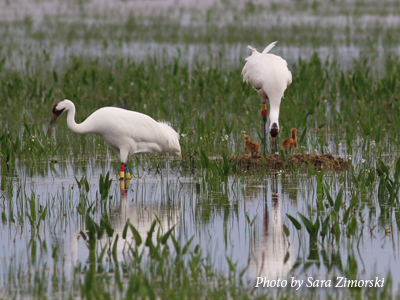
Today, as a result of years of dedication, two additional Whooping Crane populations are established. The first population migrates through the eastern United States, while the second is a non-migratory population on the species’ historic range in southern Louisiana. In 2006 and 2016, the first wild chicks successfully fledged in these reintroduced populations – symbols of hope for the future of Whooping Crane conservation.
Whooping Crane Reintroduction Team
In 2019, the Whooping Crane Eastern Partnership and Louisiana reintroduction formed the new Whooping Crane Reintroduction Team, which combines the expertise of the Eastern Migratory Population and Louisiana reintroduction programs, along with important new partners from leading zoos in the United States and Canada. This partnership supports the International Recovery Plan goal of establishing multiple self-sustaining populations of Whooping Cranes in the wild in North America.
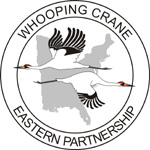
Whooping Crane Eastern Partnership
Building upon experience gained through the earlier Rocky Mountain and Florida reintroductions, a new project to restore a migratory Whooping Crane population to eastern North America was initiated in 2001. The project was developed by the Whooping Crane Eastern Partnership. Founding members of the Partnership include the International Crane Foundation, International Whooping Crane Recovery Team, Operation Migration Inc., National Fish and Wildlife Foundation, Natural Resources Foundation of Wisconsin, U.S. Fish and Wildlife Service, USGS/Patuxent Wildlife Research Center and National Wildlife Health Center, and Wisconsin Department of Natural Resources.
Important Lessons
In 1975 biologists started an ambitious project to establish a migratory Whooping Crane population in the Rocky Mountain states – the first reintroduction attempt for this endangered species. The biologists looked to wild Sandhill Cranes to stand in as surrogate parents for the Whooping Cranes and placed Whooping Crane eggs in Sandhill Crane nests at Grays Lake National Wildlife Refuge in Idaho, below.
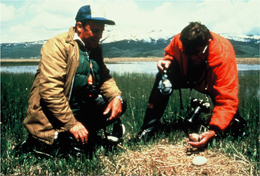
The Sandhill Cranes hatched and raised the Whooping Crane chicks, and the chicks learned the migration route to Bosque del Apache National Wildlife Refuge in New Mexico from their surrogate parents. However, when the Whooping Crane chicks reached breeding age, they did not pair with other Whooping Cranes, as they identified with their Sandhill Crane foster parents. As a result, the project was ended in 1989, and by 2002 no Whooping Cranes remained in the region.
Learn More
The Partnership has used several different methods to reintroduce Whooping Cranes and teach the young birds their migratory route from Wisconsin to the southeastern United States, including costume-rearing chicks by staff for ultralight-led migration and release in the fall with wild adult cranes, called Direct Autumn Release. In 2016, changes in the Partnership’s rearing and reintroduction methods sought to limit the amount of time chicks spent with costumed staff and emphasized as much interaction as possible with adult Whooping Cranes through parent-rearing.
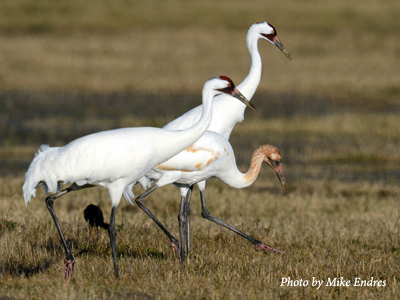
In parent-rearing adult captive Whooping Crane pairs rear chicks to fledgling age. The chicks interact with their parents as they would in the wild. Our staff works to make sure the chicks can forage for natural food items, have access to water for roosting and have the ability to take short flights in specially designed pens. In early fall, we release the parent-reared Whooping Crane chicks on pre-selected sites with wild Whooping Crane pairs. Ideally, these pairs then migrate with the chick and act as role models and guides during migration and on the wintering grounds.
Our staff is continuing to costume-rear Whooping Crane chicks at our chick-rearing facility for the Louisiana reintroduction. Due to the still small but growing size of the Louisiana flock, protocols for raising chicks for reintroduction in this population continue to focus on costume-rearing techniques that we have used successfully in the past.
Florida Non-Migratory Population
Under the guidance of the Whooping Crane Recovery Plan in 1993, biologists began a project to reintroduce Whooping Cranes to Florida. The cranes were raised in captivity by adult Whooping Cranes or biologists dressed in crane costumes to prevent the birds from imprinting incorrectly. Biologists learned this lesson from initial reintroduction efforts in Idaho twenty years earlier. See the right sidebar for more on the Idaho project. This population was non-migratory because the cranes were released in Florida and never taught a migration route.
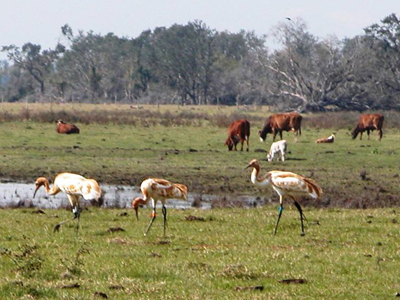
In 2002, a pair from this flock hatched and fledged chick. This historic hatch was the first wild Whooping Crane hatch in the United States since 1939. However, reproduction was slower than anticipated, and mortality rates were high, primarily due to predation. Drought and development were additional factors affecting this population, and as a result, reintroduction efforts in Florida ended in 2008.